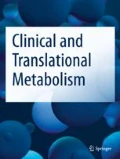Abstract
Heterotopic ossification (HO) as a primary clinical finding is uncommon, but it occurs in two human genetic disorders: fibrodysplasia ossific, ans progressiva (FOP) and progressive osseous heteroplasia (POH). In these disorders, the progression and stages of the ectopic bone formation appear normal, but disregulation of cell differentiation leads to improper induction of bone formation—in other words, normal bone forms in the wrong place at the wrong time. Cases of POH were initially recognized following misdiagnosis as FOP. However, POH can be distinguished from FOP by several criteria: the presence of cutaneous ossification, the absence of congenital malformations of the skeleton, the absence of inflammatory tumor-like swellings, the asymmetric mosaic distribution of lesions, the absence of predictable regional patterns of HO, and the predominance of intramembranous rather than endochondral ossification. Both FOP and POH are rare conditions, with most cases apparently the result of a de novo (spontaneous) mutation: however, when inherited, both are transmitted through an autosomal-dominant inheritance pattern. Although FOP can be inherited from either a mother or a father, POH is only inheried paternally. Consistent with this parental inheritance pattern, POH patients carry inactivating mutations of the GNAS gene, a gene that is regulated through genomic imprinting and allele-specific gene expression. The genetic cause of FOP remains undetermined. A combination of clinical and genetic evaluations can identify FOP and POH, two distinct disorders of extensive HO.
Similar content being viewed by others
References
Kaplan FS, Shore EM, Connor JM. 2002 Fibrodysplasia ossificans progressiva. In: Royce P, Steinmann B, eds. Connective Tissue and Its Heritable Disorders. Wiley-Liss, New York, pp. 827–840.
Kaplan FS, Shore EM. 2000 Progressive osseous heteroplasia: a perspective. J Bone Miner Res 15:2084–2094.
Serrano de la Peña L, Billings PC, Fiori JL, Ahn J, Kaplan FS, Shore EM. 2005 Fibrodysplasia ossificans progressiva (FOP), a disorder of ectopic osteogenesis, misregulates cell surface expression and trafficking of BMPRIA. J Bone Miner Res 20:1168–1176.
Shore EM, Ahn J, Jan de Beur S, et al. 2002 Paternally inherited inactivating mutations of the GNAS1 gene in progressive osseous heteroplasia. N Engl J Med 346:99–106.
Yeh GL, Mathur S, Wivel A, et al., 2000 GNAS1 mutation and Cbfa1 misexpression in a child with severe congenetal plate-like osteoma cutis. J Bone Miner Res 15:2063–2073.
Eddy MC, Jan de Beur SM, Yandow SM, et al. 2000 Deficiency of the α-subunit of the stimulatory G protein and severe extraskeletal ossification. J Bone Miner Res 15: 2074–2083.
Feldman G, Li M, Martin S, et al. 2000 Fibrodysplasia ossificans progressiva, a heritable disorder of severe heterotopic ossification, maps to human chromosome 4q27-31. Am J Hum Genet 66:128–135.
Weinstein LS, Yu S, Warner DR, Liu J. 2001 Endocrine manifestations of stimulatory G protein alpha-subunit mutations and the role of genomic imprinting. Endocr Rev 22:675–705.
Bastepe M, Juppner H. 2005 GNAS locus and pseudohypoparathyroidism. Hormone Res 63:65–74.
Lietman SA, Ding C, Cooke DW, Levine MA. 2005 Reduction in Gs alpha induces osteogenic differentiation in human mesenchymal stem cells. Clin Orthop 434:231–238.
Author information
Authors and Affiliations
Corresponding author
Rights and permissions
About this article
Cite this article
Shore, E.M., Kaplan, F.S. Fibrodysplasia ossificans progressiva and progressive osseous heteroplasia. Clinic Rev Bone Miner Metab 3, 257–259 (2005). https://doi.org/10.1385/BMM:3:3-4:257
Issue Date:
DOI: https://doi.org/10.1385/BMM:3:3-4:257




